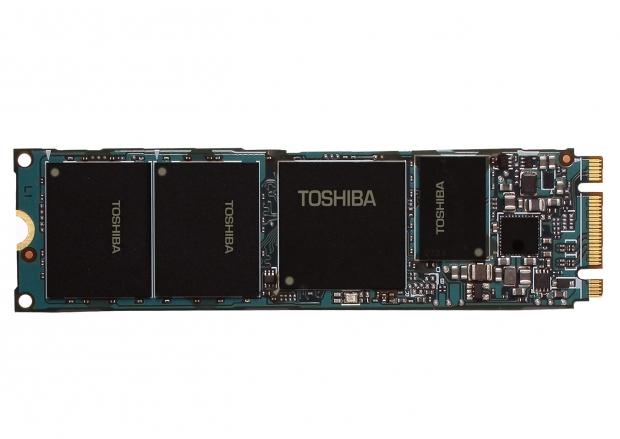Storage News - Page 55
Seagate smashes storage speed record with new 10GB/sec SSD
The memory masters at Seagate have just smashed through the world SSD speed record with a new blazing-fast solid state drive.
During a demonstration, Seagate's new ultra-fast SSD hit an unbelievable transfer rate of 10GB/sec, which is 4GB/s faster than the former world's-fastest SSD. The company's new 10GB/s SSD is built for high-end enterprise use, and utilizes the NVMe protocol and rides 16 PCIe lanes for maximum throughput. The drive also meets the storage specifications outlined by Facebook's Open Compute Project.
"Your data is only as good as how easily you can access it and put it to use," Seagate's SSD executive Brett Pemble said. "Seagate is committed to providing the full spectrum of technologies to help meet the diverse needs of organizations so they can unlock this value. Whether for consumer cloud or business applications, this SSD will help improve on demands for fast access to information, where split seconds drive incremental value gains."
Continue reading: Seagate smashes storage speed record with new 10GB/sec SSD (full post)
Samsung with world's largest SSD for enterprise storage - 15.36TB
Samsung has today announced its addition to the SSD market, the PM1633, being no less than a gigantic 15.36TB SSD designed for the enterprise storage market. Marked as the world's largest in its class, Samsung has packed some serious performance within.
Based on a 12Gb/s SAS interface and measuring in as a 2.5-inch form factor drive, this new product will further be released in 7.68TB, 3.84TB, 1.92TB, 960GB and 480GB editions. Boasting "random read and write speeds of up to 200,000 and 32,000 IOPS respectively," the recently issues press release also makes note of read and write speeds being boosted up to 1,200MB/s in this model.
This product release is said to be part of Samsung's plight to become more competitive in the SAS SSD market, helping completely overturn the use of hard disks in some server operations.
Continue reading: Samsung with world's largest SSD for enterprise storage - 15.36TB (full post)
WD expands its 8TB HDDs, now has a 16TB external HDD solution
Western Digital has just announced that it has expanded its internal and external storage solutions, now offering huge 16TB external storage solutions for professionals on-the-go, or those who need serious amounts of backup at home or work.
WD will be launching a slew of new HDDs throughout the first half of 2016, which will include their My Cloud personal storage devices, My Book external HDDs, as well as the internal WD Red, WD Red Pro and WD Purple HDDs. All of these drives will offer "purpose-driven engineering and HelioSeal helium-technology with the new 8TB drives for maximum and efficient performance in the applications for which each model is designed". VP of Product Marketing for WD, Brendan Collins, explains: "We are committed to integrating high-performance, high-capacity and high-quality drives into all of our solutions. No matter what market or application, we have a solution - whether it's for small businesses, channel partners, enterprises or end-users. Our goal is to deliver the best and most competitive solutions on the market".
As for the HDDs that will be bumped up to 8TB or 16TB (with 2 x 8TB HDDs in RAID 0), it'll include:
Continue reading: WD expands its 8TB HDDs, now has a 16TB external HDD solution (full post)
Toshiba steps up its enterprise game, offers 1.92TB SSDs
The HK4 series from Toshiba has been solely aimed at improving storage in the enterprise market, offering a new read-intensive HK4R Series of SSDs that pack up to 1.92TB in capacity and the HK4E value drives that will be released up to 1.6TB.
With the option to be packed with Trusted Computing Group enterprise encryption and Toshiba's Quadruple Swing-By Code error-correction technology, these drives are built to last in a data-intensive environment. As solid state drives reach more popularity as storage for server solutions, Toshiba America's vice president of SSD, Jeremy Werner, says that these new models are "designed to meet the needs of our customers who are looking for a SATA SSD with low operating power, excellent quality of service, high capacity and with encryption."
While the features and storage capacities sound great, there has unfortunately been no mention of release pricing just yet. With the release date set for April 2016, we will have to wait and see how badly these will hurt the wallet.
Continue reading: Toshiba steps up its enterprise game, offers 1.92TB SSDs (full post)
SanDisk's new microSD UHS-II card is capable of 275MB/sec
MWC 2016 - SanDisk has just unveiled their latest microSD UHS-II card, with SanDisk's new Extreme PRO microSD card capable of read speeds of 275MB/sec.
The new UHS-II capable microSD card is considerably faster than its predecessor, which could only transfer data at 90MB/sec. The write speeds on the new microSD card hit around 100MB/sec, and don't let its size deceive you - as this new microSD card is capable of 275MB/sec, while the full-sized Extreme PRO SD cards tap out at 280MB/sec.
SanDisk is pushing their new Extreme Pro microSD UHS-II card is shockproof, temperature-proof, waterproof and even X-ray-proof. These new class 10 cards only arrive in two capacities: 64GB and 128GB. SanDisk is aiming these new cards at the professionals, with the 64GB version priced at $179.99 and the 128GB priced at $299.99.
Continue reading: SanDisk's new microSD UHS-II card is capable of 275MB/sec (full post)
Seagate's new 2TB HDD is fastest, slimmest drive at just 7mm
Seagate has just unveiled their latest 2TB mechanical HDD, but what makes this one stand out from the slew of 2TB, 4TB, 6TB and even 8TB HDDs on the market? Well, it's only 7mm thick.
The company has pushed out its new 2TB slim HDD that will find a home inside of notebooks, where 3.5-inch HDDs are just too thick. Seagate explains: "Utilizing 1TB per disk, the Seagate Mobile HDD delivers the highest capacity possible in a small 7mm form factor. Compatible with most of today's mobile computers, the drive's standard SATA 6Gb/s interface provides for easy integration into existing laptop designs and portable computer upgrades. With up to 2TB of space, the Mobile HDD enables affordable high capacity storage, while supporting over 200,000 photos, 250,000 songs or 124 hours of high definition video. The drive is available in both 1TB and 2TB capacities".
Seagate adds that its new 2TB HDD is 25% lighter than its predecessor, and its 7mm form factor won't have issues in both desktops and laptops. The worrying part of this is that the company didn't release any performance numbers, so we don't know the read/write speeds at the moment.
Continue reading: Seagate's new 2TB HDD is fastest, slimmest drive at just 7mm (full post)
Toshiba launches its first 1TB M.2 SSD with 15nm NAND flash
Toshiba has unveiled its new SG5 series of consumer SSDs, which includes the company's first-ever 1TB M.2 form factor SSD.
Toshiba's new consumer-ready SG5 series is built with the company's TLC (triple-level cell) NAND flash memory, and features up to 1,024 GB capacities with a 6.0 Gbit/s SATA interface. The consumer-based series comes in a flexible array of sizes, including 128GB, 256GB and 512GB flavors in M.2 and traditional 2.5-inch sizes. To ensure efficiency, the SG5 line is loaded with Toshiba's proprietary QSBC (Quadruple Swing-By Code) error correction technology.
The M.2 drives come in two designs--the 1TB two-sided variant, and the one-sided option with the remaining capacities. Toshiba lists the SG5 series has sequential read speeds up to 545 MB/s, and write speeds up to 388 MB/s, and a mean time to failure (MTTF) rating of 1,500,000 hours. No pricing or availability details were listed, but check below for a full spec sheet.
Continue reading: Toshiba launches its first 1TB M.2 SSD with 15nm NAND flash (full post)
New storage technique can house 360 TB data for 13.8 billion years
University of Southampton scientists have developed a new digital data storage technique that allows one to store up to 360 TB of data for up to 13.8 billion years.
The technology is especially exciting for archive organizations, museums, libraries, and the like, all of which value highly the extreme long-term preservation of data. Already the Universal Declaration of Human Rights (UDHR), Newton's Opticks, Magna Carta, and King James Bible have been saved; the Declaration was recently presented to UNESCO by the ORC at the International Year of Light (IYL) closing ceremony in Mexico.
The technique utilizes nanostructured glass memory (dubbed the 'Superman memory crystal') created in fused quartz (one of the hardest and most durable natural structures in Earth's history) and femtosecond laser writing to record data in five dimensions (5D).
Continue reading: New storage technique can house 360 TB data for 13.8 billion years (full post)
Massive SSD's could be on the horizon with Micron's new 3D NAND tech
Micron's introduction of their 3D NAND technology yesterday marks what could be a massive jump in capacity for enterprise and even consumer SSD's. We could, with Intel's partnership and stake in the technology, see upwards of 10TB SSD's for far less than we currently pay for the size.
The magic to this leap in capacity, and even potentially prune the price per GB, is in the packaging. It's far from a perfected process, but once manufacturing has picked up and fabs are properly modified to support the manufacturing process, the costs associated will reduce appropriately. But that stacking can reduce costs even more because of the manufacturing efficiency associated with it. The benefits may not be immediately apparent, though that simplified process of making the whole package will eventually trickle down to us, the consumer. And we'll eventually benefit greatly from it.
Furthermore, the verticality, as evidence by Samsung's method, can result in an increase in density that could allow for even USB thumb drives with multi-terabyte capacities. Again, that move to consolidate the entire package uses less room than even the V-NAND structure employed by Samsung. Micron even claims that their solution has a massive three times the density as their competitors solution. If that's true, then it won't be too terribly long before 10TB or even 20TB SSD's become affordable, and normal, for consumers.
Continue reading: Massive SSD's could be on the horizon with Micron's new 3D NAND tech (full post)
Micron unveils its own 3D NAND technology, finally going vertical
Vertical NAND is all the rage, something that was initially released commercially by Samsung but is in development by the other manufacturers as well. Micron is unveiling their first generation of 3D NAND into the wild, ready to improve density, reliability and performance.
Samples of their own vertically aligned NAND were shown at CES this year, though they were playing a little coy with the details until things were actually finalized. And now those specifications are. Micron's first generation of 3D NAND will come in two flavors, a 256Gb MLC die and a 384Gb TLC die, and those are ready for manufacture it would seem, ready to be integrated into products coming out in the near future.
Interestingly, Micron has made some very significant advancements in how they package their NAND. In the past, the CMOS logic was packaged alongside of the actual memory die itself, but they've been able to place nearly 75% of the CMOS itself underneath the NAND array, similar to how HBM has localized the entire stack vertically. That innovation makes it more cost effective to manufacture.
Continue reading: Micron unveils its own 3D NAND technology, finally going vertical (full post)



